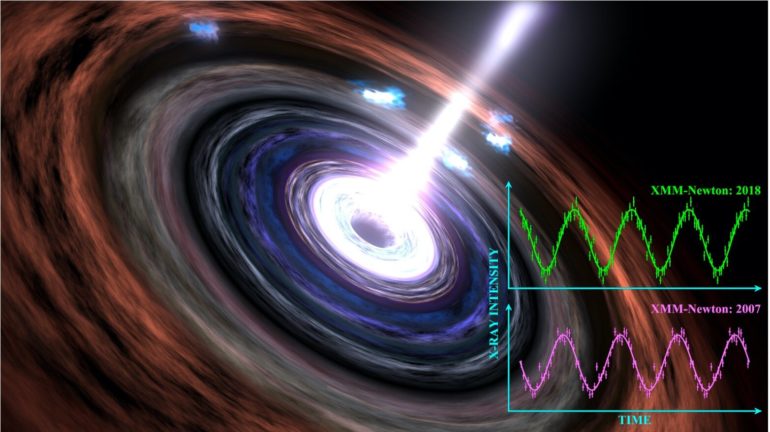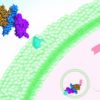The first confirmed heartbeat of a supermassive black hole is still going strong more than ten years after first being observed.
X-ray satellite observations spotted the repeated beat after its signal had been blocked by our Sun for a number of years.
Astronomers say this is the most long lived heartbeat ever seen in a black hole and tells us more about the size and structure close to its event horizon—the space around a black hole from which nothing, including light, can escape.
The research, by the National Astronomical Observatories, Chinese Academy of Sciences, China, and Durham University, UK, appears in the journal Monthly Notices of the Royal Astronomical Society.
The black hole’s heartbeat was first detected in 2007 at the centre of a galaxy called RE J1034+396 which is approximately 600 million light years from Earth.
The signal from this galactic giant repeated every hour and this behaviour was seen in several snapshots taken before satellite observations were blocked by our Sun in 2011.
In 2018 the European Space Agency’s XMM-Newton X-ray satellite was able to finally re-observe the black hole and to scientists’ amazement the same repeated heartbeat could still be seen.
Matter falling on to a supermassive…



